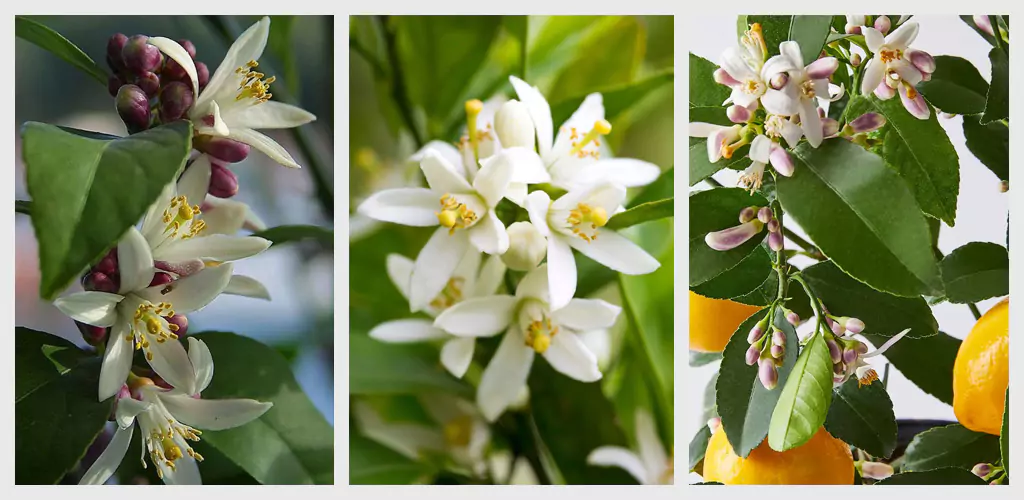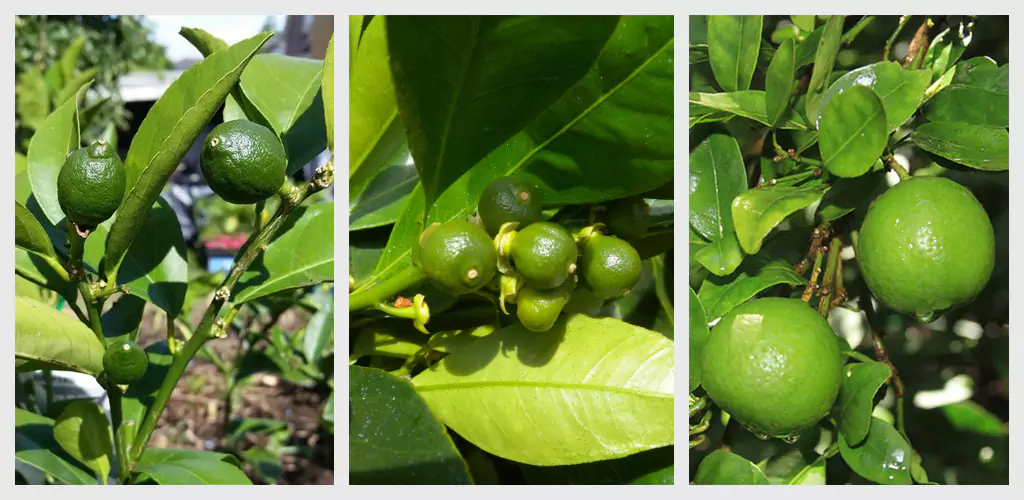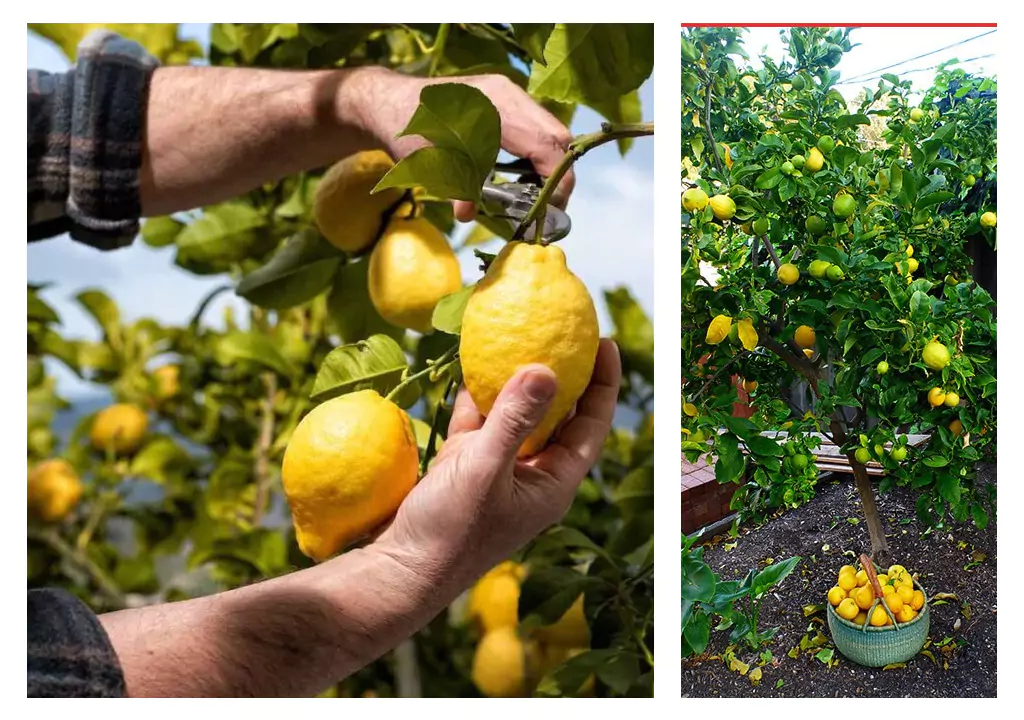The growth stages of a lemon tree include the seedling stage, the juvenile stage, and the mature fruit-bearing stage. A lemon tree goes through several growth stages in its lifecycle.
From a small seedling to a mature fruit-bearing tree, each stage is crucial for its development. Understanding these growth stages can help gardeners care for their lemon trees effectively and ensure a bountiful harvest. In the seedling stage, the tree develops its roots and leaves, establishing a strong foundation.
As it enters the juvenile stage, the lemon tree grows taller and stronger, with the formation of branches and a thicker trunk. Finally, in the mature fruit-bearing stage, the tree produces blossoms that eventually turn into delicious lemons. By providing the necessary nutrients, water, and sunlight, you can support your lemon tree throughout its growth stages and enjoy the fruits of your labor.
1. Seedling Stage
The seedling stage is the first phase in the growth cycle of a lemon tree. It is the period when the lemon tree develops from a tiny seed into a small plant. This stage is crucial as it sets the foundation for the tree’s growth and productivity in the future.

Germination
Germination is the initial process in the development of a lemon tree from a seed. It begins when the seed is provided with favorable conditions such as proper moisture, warmth, and oxygen. Through this process, the outer shell of the seed cracks open, allowing a tiny sprout to emerge.
During germination, the seed absorbs water, which triggers enzymes to break down stored nutrients. These nutrients fuel the growth of the embryo inside the seed, leading to the formation of a young root and shoot.
Development Of Roots
The development of roots is an essential aspect of the seedling stage in the growth of a lemon tree. As the seedling continues to grow, its root system expands in search of water and nutrients to support its growth.
Initially, the primary root, known as the taproot, grows vertically into the soil. Simultaneously, secondary roots branch out horizontally, forming a network of smaller roots that spread throughout the soil. This robust root system ensures stability and anchorage for the developing lemon tree.
The roots absorb water and minerals from the soil, transporting them to the rest of the tree for growth and nourishment. Additionally, the root system facilitates the tree’s ability to withstand harsh weather conditions and promotes efficient nutrient uptake, contributing to its overall health and vitality.
In conclusion, the seedling stage of a lemon tree is characterized by germination and the development of a strong root system. Understanding these processes is crucial for nurturing the seedling and ensuring its healthy growth into a mature lemon tree.
Related Post: How to Prune Sage
Related Post: How to Clean Monstera Leaves
2. Seedling Growth
The seedling growth stage is a crucial part of a lemon tree’s development. During this stage, the young tree establishes roots and begins to shoot upward, preparing for the next growth phases. With proper care and nutrients, the seedling will lay the foundation for a healthy and productive lemon tree.
Lemon trees, like most other plants, go through different growth stages as they mature. The second stage of growth is known as the seedling stage, which is crucial for the healthy development of the lemon tree. In this stage, the lemon tree undergoes leaf formation and stem development, setting the foundation for its future growth.
Leaf Formation
During the seedling stage, the lemon tree begins to produce its first set of leaves. These leaves play a vital role in capturing sunlight, which is essential for photosynthesis – the process by which plants convert energy from sunlight into food. The formation of leaves is an exciting milestone as it signifies the lemon tree’s ability to absorb water and nutrients from the soil and convert them into energy.
The leaves of a lemon tree are typically small, green, and have a glossy appearance. As the seedling continues to grow, more leaves will emerge, gradually increasing its ability to photosynthesize and produce energy. Keep in mind that young leaves are delicate and vulnerable to external factors such as harsh weather conditions and pests. Therefore, it is crucial to provide proper care and protection to ensure their healthy development.
Stem Development
At the seedling stage, the lemon tree also focuses on stem development. The stem serves as the primary support structure for the tree, allowing it to stand tall and upright. Initially, the stem is thin and fragile, but with time and proper care, it strengthens and thickens, becoming more resilient. The stem is responsible for transporting water and nutrients from the roots to the leaves and vice versa. As the lemon tree grows, the stem gradually expands and develops woody tissues, providing stability and durability.
This process of stem development is instrumental in preparing the lemon tree for its future growth and enables it to withstand harsh weather conditions and other external pressures. During the seedling stage, it is essential to monitor the stem for any signs of damage or weakness. Providing adequate support such as stakes or ties can help ensure the proper growth and stability of the lemon tree. Regular pruning can also promote healthier stem development by removing any diseased or malformed branches. By understanding the growth stages of a lemon tree, particularly the seedling stage with its leaf formation and stem development, you can better assist the tree’s growth and ensure its healthy development into a productive lemon-bearing tree.
3. Vegetative Stage
When it comes to the growth of a lemon tree, understanding its various stages can help ensure its proper care and maintenance. The third stage in the growth process is the Vegetative Stage, where the lemon tree experiences significant development in its branches, foliage, and thorns.
Branching And Foliage Expansion
During the Vegetative Stage, the lemon tree begins to exhibit remarkable growth in terms of branching and foliage expansion. New branches emerge from the main trunk, and the existing ones extend further, creating a fuller and more substantial canopy. This expansion of branches allows for enhanced photosynthesis, where the leaves absorb sunlight and convert it into energy that fuels the tree’s growth. As the foliage expands, more leaves are produced, increasing the lemon tree’s capacity to produce energy and grow further.
Growth Of Thorns
Another significant aspect of the Vegetative Stage is the growth of thorns on the lemon tree. Thorns serve as a natural defense mechanism, protecting the tree from potential threats such as pests or animals. Thorns grow along the branches and the main trunk, acting as deterrents that help preserve the integrity of the tree. The emergence of thorns indicates the lemon tree’s readiness to face external challenges and reinforces its ability to withstand adverse conditions.
As the lemon tree progresses through the Vegetative Stage, it showcases impressive advancements in branching, foliage expansion, and the growth of thorns. These developments signify the tree’s vitality, ensuring its resilience and capacity for further growth in the subsequent stages.
4. Flowering Stage
The flowering stage is an exciting phase in the growth of a lemon tree. This is when the tree starts to produce beautiful and fragrant flowers, which eventually lead to the development of fruits. Understanding the different aspects of the flowering stage can help lemon tree owners nurture their trees and ensure a bountiful harvest.

Bud Formation
Bud formation is the first step in the flowering stage of a lemon tree. During this process, small, rounded buds start to appear on the branches. These buds contain the undeveloped flowers of the lemon tree. As the buds grow and mature, they gradually transform into vibrant and colorful blooms.
If you have been caring for your lemon tree properly, you will notice an abundance of buds forming all over the tree. This is a positive sign that your tree is healthy and ready to produce a substantial number of flowers.
Proper nutrition and watering are crucial during this stage to ensure that the buds receive the required nutrients and moisture for healthy development. Providing sufficient sunlight is also vital to support bud formation.
Petal Development
Once the buds have formed, the next stage is petal development. During this phase, the buds start to unfurl, and the individual petals become more visible. Gradually, the buds fully open up, revealing the vibrant colors of the lemon tree blossoms.
The petals play a vital role in attracting pollinators, such as bees and butterflies, to the tree. These insects are essential for cross-pollination, which is necessary for the development of fruits.
Observing the petal development is an exciting experience. As the petals expand and become more prominent, you can appreciate the beauty and intricacy of nature. It is essential to protect the developing flowers from extreme weather conditions, such as strong winds or heavy rains, as these can cause damage to the delicate petals.
During this stage, it is crucial to continue providing your lemon tree with proper care and attention. Regularly monitor the tree’s watering needs and ensure it receives sufficient sunlight. Pruning any dead or damaged branches is also advisable to promote healthy petal development.
The flowering stage is an essential phase in the growth of a lemon tree, as it marks the beginning of fruit production. By understanding the different aspects of the flowering stage, such as bud formation and petal development, you can support your lemon tree’s growth and enjoy a bountiful harvest.
Related Post: 4 Best Low Light Hanging Plants for Indoor
Related Post: Best 7 Tips to Keep Birds from Eating Grass Seed
5. Fruit Setting Stage
At the Fruit Setting Stage of a lemon tree’s growth, the tree starts to produce fruit after successful pollination. This stage is crucial for the tree’s development and eventual harvest. The following aspects are important to consider during this stage:

Pollination
Pollination is a critical process in the fruit-setting stage, as the tree needs to produce fruit. Lemon trees are self-pollinating, meaning they can produce fruit without the need for cross-pollination from another tree. However, cross-pollination can increase fruit yield. Bees and other pollinators play a crucial role in the pollination process by transferring pollen from the stamen to the pistil. Optimal pollination conditions include warm weather and minimal wind to ensure the successful development of fruit.
Fruit Growth
After successful pollination, the fruit of the lemon tree begins to grow. The fruit will start as small green buds, which will gradually grow into recognizable yellow lemons. Proper care and maintenance of the tree, such as adequate watering and fertilization, are essential to support healthy fruit growth. Pest and disease management is also crucial during this stage to protect the developing fruit and ensure a successful harvest.
6. Fruit Maturation Stage
At the fruit maturation stage, the lemon tree is ready to bear fruit, marking a crucial phase in its growth journey. This is the stage where the lemon fruits undergo the final steps towards maturity and ripening. Let’s delve into the details of this stage and explore the two key aspects of fruit maturation: Color Change and Increase in Size.
Color Change
This phase is characterized by the transformation of the green lemon fruits into their distinctive bright yellow color. The color change indicates that the fruits are reaching their optimal ripeness and are approaching readiness for harvest. The vivid yellow hue is a clear sign that the lemon fruits have completed their growth cycle.
Increase In Size
During the fruit maturation stage, the lemon fruits experience a significant increase in size, becoming plump and juicier as they mature. This size enhancement is a result of the accumulation of essential nutrients and water within the fruits. The visibly larger size of the lemons signals that they are nearing full maturity, ready to be enjoyed and utilized in various culinary and household applications.
7. Harvesting Stage
The harvesting stage is a key phase in the growth stages of a lemon tree. It is the time when the lemons on the tree are mature and ready to be picked for use or sale.
When it comes to the growth stages of a lemon tree, the 7th stage is the highly anticipated harvesting stage. This is the moment you’ve been patiently waiting for, where you can finally reap the rewards of your hard work and enjoy the fruits of your labor. However, before you jump right into picking the lemons, there are a few important considerations to keep in mind.

Assessing Ripeness
Assessing the ripeness of your lemons is crucial to ensure that you get the most flavorful and juicy fruits. It’s essential to pick the lemons at the right time, neither too early nor too late. But how do you determine if a lemon is ripe and ready for picking? One way to assess ripeness is by checking the color of the lemon. Ripe lemons typically have a bright yellow hue, indicating that they are ready to be harvested.
On the other hand, green lemons are not yet fully mature and may lack the desirable taste and juiciness. Another method to assess ripeness is to gently squeeze the lemons. Ripe lemons will give a little under your touch and feel slightly soft. However, be careful not to squeeze too hard as it can damage the fruit.
Picking The Fruit
Once you’ve determined that your lemons are indeed ripe and ready for picking, it’s time to carefully harvest them from the tree. Here are a few tips to ensure that you pick the fruit properly: 1. Approach the lemon tree with caution and be mindful of the thorns that may be present on the branches. Protect your hands by wearing gloves or using pruning shears to cut the lemons from the tree, leaving a small portion of the stem intact. 2. When picking the lemons, it’s important to handle them delicately to avoid any bruising or damage.
Hold the fruit gently and twist it slightly until it detaches from the stem. 3. As you pick the lemons, carefully place them in a basket or container to prevent them from rolling around and getting damaged. Remember, it’s essential to harvest your lemons promptly to ensure that they retain their freshness and flavor. Leaving the lemons on the tree for too long can result in overripeness and may diminish their taste. In conclusion, the harvesting stage of a lemon tree is an exciting time that allows you to enjoy the fruits of your hard work.
By assessing the ripeness of the lemons and picking them carefully, you can ensure that you get the most out of your harvest. So, go ahead and savor the sweet and tangy taste of freshly picked lemons from your very own tree!
Related Post: 5 Best Tips for How to Keep Bugs Out of Garden
Related Post: 5 Tips for Growing Tomatoes in Buckets
Related Post: Indoor Plant Soil Secrets 2024
Frequently Asked Questions For Growth Stages Of A Lemon Tree
How Long Does It Take To Grow A Lemon Tree?
A lemon tree usually takes about three to five years to grow from a seed or young sapling to produce fruit. The exact time can vary depending on factors like climate, care, and tree variety. It’s important to provide proper sunlight, watering, and fertilization for optimal growth.
What Is The Life Cycle Of A Lemon Tree?
A lemon tree typically takes 3-5 years to start producing fruit. It requires well-drained soil, full sun, and regular watering. The tree begins as a seed, grows into a sapling, flowers after several years, then develops into a mature fruit-bearing tree.
Do Blossoms On A Lemon Tree Turn Into Lemons?
Yes, blossoms on a lemon tree do turn into lemons. After the blossoms are pollinated by bees or wind, they develop into lemons. This process takes several months before the lemons are fully grown and ready to be harvested.
How Long After Flowering Do Lemons Appear?
Lemons typically appear within 6 to 9 months after flowering. The time can vary depending on factors like climate and growing conditions.
What Are The Different Growth Stages Of A Lemon Tree?
The growth stages of a lemon tree include seed germination, seedling growth, juvenile stage, flowering, and fruiting.
Conclusion
To sum up, cultivating a lemon tree requires patience and understanding of its growth stages. From the initial seedling to the mature tree, each phase brings its challenges and rewards. By providing the right conditions, such as well-draining soil and adequate sunlight, you can ensure the tree thrives.
Regular pruning and proper care will contribute to a bountiful harvest of delicious lemons for years to come. Enhance your gardening skills and take pleasure in witnessing the growth and productivity of your lemon tree.




